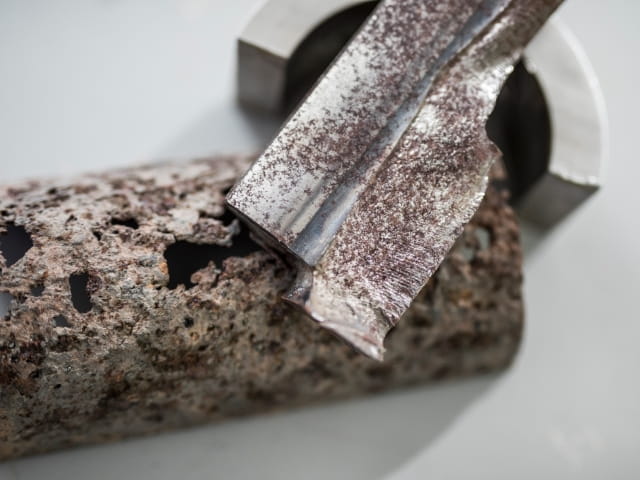Element's pitting and crevice corrosion testing services ensure material durability and compliance while saving time and costs. Prevent corrosion before it starts with our advanced methods. We provide testing across various products and industries including Energy, Aerospace, Infrastructure, Environmental, and Industrials.
What is the Difference Between Pitting and Crevice Corrosion?
Pitting and crevice corrosion are both forms of localized corrosion but occur under different conditions and affect materials in distinct ways:
Pitting Corrosion: This occurs as small, isolated holes or pits on a material's surface. It is difficult to predict and often appears suddenly, affecting only localized areas while the majority of the surface remains unaffected. Pitting typically results from breakdowns in the passive protective layer on metals like stainless steel due to exposure to aggressive environments, such as chloride-containing solutions.
Crevice Corrosion: This occurs in confined spaces where two surfaces meet, such as under gaskets, seals, washers, or within tight joints. It arises due to differences in the oxygen concentration within the crevice compared to the surrounding area, leading to an aggressive localized attack. Crevice corrosion is particularly insidious because it starts in hidden areas, making early detection challenging.
Benefits of Element’s Pitting and Crevice Corrosion Testing services
- Comprehensive Testing Services: Element provides rigorous pitting and crevice corrosion testing following ASTM G48, G78, and G150 standards.
- Accurate Detection: Determine Critical Pitting Temperature (CPT) and Critical Crevice Temperature (CCT) with precision using Element's advanced testing methods.
- Advanced Analysis: Utilize Electron Scanning Microscopy, available at Element's facilities, for detailed evaluation of corrosion patterns.
- Global Reach: Access Element's state-of-the-art facilities and expert teams across the USA, Europe, Middle East, Asia, and Africa.
- Cost Efficiency: Avoid costly delays and ensure timely project completion with Element's first-time-right results.
- Expert Guidance: Benefit from Element’s extensive industry knowledge to select the most suitable test methods for your materials.
To provide a more comprehensive evaluation of your materials' integrity, Element offers extensive expertise in various corrosion testing methods, including electrochemical corrosion testing alongside pitting and crevice corrosion testing. This ensures your products remain reliable and safe in diverse environments, simplifying your testing needs under one roof.
Predicting component life with corrosion modeling
Erosion within oil and gas pipelines is a serious problem. Corrosion modeling using the Computational Fluid Dynamic method can accurately predict the location of burn-throughs.
Read MoreIntergranular Corrosion Testing: An Overview of ASTM A262
ASTM A262 is a common intergranular corrosion testing method that can quickly screen batches of material to determine corrosion susceptibility. The ASTM A262 testing specification contains five unique intergranular corrosion tests.
LEARN MOREInvestigating critical HVAC failure from "ant nest corrosion"
A customer noticed a leakage of the refrigerant liquid inside a refrigeration unit. Element's experts suspected a case of "ant nest corrosion" and explains details of their investigation in this case study.
Read MoreEarly Detection Using Element’s Pitting and Crevice Corrosion Testing services
Crevice corrosion often occurs in concealed areas, making it difficult to detect until significant damage has already occurred. With Element's expertise and advanced testing methods, customers can identify and address crevice corrosion vulnerabilities before they escalate. By conducting thorough testing in accordance with ASTM standards, including ASTM G48, and G78, and utilizing techniques such as Electron Scanning Microscopy, Element ensures early detection and effective mitigation of hidden corrosion, safeguarding the integrity of materials.
Enhancing Material Durability
Crevice corrosion often occurs in concealed areas, making it difficult to detect until significant damage has already occurred. With Element's expertise and advanced testing methods, customers can identify and address crevice corrosion vulnerabilities before they escalate. By conducting thorough testing in accordance with ASTM standards, including ASTM G48, and G78, and utilizing techniques such as Electron Scanning Microscopy, Element ensures early detection and effective mitigation of hidden corrosion, safeguarding the integrity of materials.
Methods We Use For Testing:
Pitting corrosion testing to ASTM G48 A, C and E test methods
Element performs pitting corrosion testing following ASTM G48 A at test temperature, typically up to 60°C. The test involves the exposure of the materials in a 6 wt % ferrite chloride solution for test durations of 72 hours (typically 24 hours). A variation of the ASTM G48-A test used for duplex stainless steels is the ASTM A923 method – C test.
Crevice corrosion testing to ASTM G48 B, D and F test methods
Element performs crevice corrosion testing in accordance with ASTM G48 B at the test temperature, typically up to 60°C. The test involves the exposure of the materials in a 6 wt % ferrite chloride solution for test durations of 72 hours (typically 24 hours).
Crevice corrosion ASTM G78 test method
Element offers crevice corrosion testing in accordance with ASTM G78 at the test temperature, typically up to 60°C. The test involves the application of castellated washers (MCAs) to the surface of the specimen, usually with 20 contact points on each washer in a chloride-containing environment (seawater) for a test duration of up to 30 hours (typically 24 hours). At the end of the test period, the specimens are examined for evidence of crevice corrosion.
Why Choose Element
With decades of experience and expertise in across various industries, Element ensures reliable and accurate results. Our facilities are located across the USA, Europe, Middle East, Asia, and Africa and offer worldwide access to comprehensive testing services.
Element adheres strictly to ASTM standards, including ASTM G48, G78, and G150, as well as regulatory requirements, providing assurance of compliance with industry specifications.
Our in-depth knowledge of industry standards and corrosion testing programs allow us to advise you on the most suitable test method for your materials.
For more information about how we perform pitting and crevice corrosion testing, or to request a quote, contact us today.
More from Element
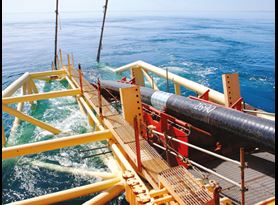
Corrosion Testing
Element’s corrosion testing laboratories provide complete corrosion testing services to many industries, including salt spray, cyclic corrosion, pitting testing, and more.
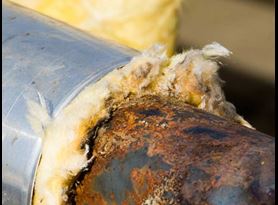
Corrosion Under Insulation (CUI) Testing
Element supports clients to assist in evaluating solutions to try and mitigate corrosion under insulation (CUI).
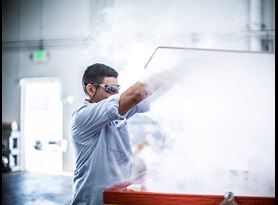
Salt Spray Testing
Find out how our Engaged Experts conduct salt spray testing, or natural salt spray (NSS) to evaluate the integrity of a coating in a corrosive environment or to test the corrosion resistance of a product or material.
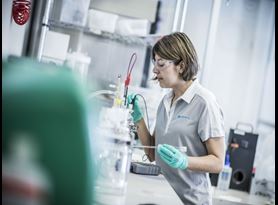
Electrochemical Corrosion Testing
Element provides electrochemical corrosion testing using Electrochemical Impedance Spectroscopy, cyclic potentiodynamic polarization measurements and galvanic corrosion measurements.
